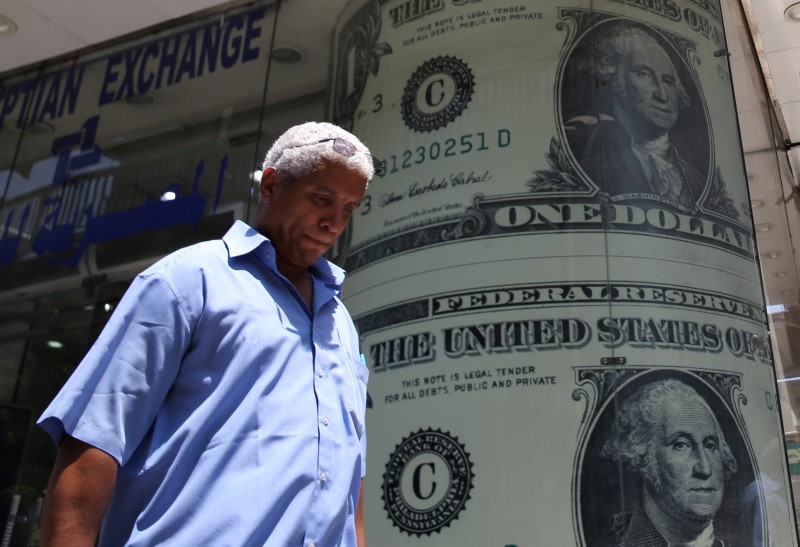European shares fall: Trump threatens ’massive’ tariff increase on China
Investing.com - The U.S. dollar slipped lower Tuesday, retreating after sharp gains overnight, as traders digested the latest news surrounding U.S. President Donald Trump’s trade negotiations.
At 04:10 ET (08:10 GMT), the Dollar Index, which tracks the greenback against a basket of six other currencies, edged 0.2% lower to 96.910, having climbed as high as 97.280 overnight.
Dollar hands back overnight gains
Trump announced late Monday that he has sent letters to 14 countries, including Japan and South Korea, unveiling sharply higher tariffs on imports into the United States.
The president also signed an executive order on Monday extending his July 9 deadline for trade agreements to Aug. 1, adding that this new deadline for imposing reciprocal tariffs is "not 100% firm” and that he’s open to alternate proposals if trade partners request changes.
“The market seems to be taking the view that nothing is final and that these letters merely mark another iteration on the journey towards a trade deal,” said analysts at ING, in a note.
“DXY [the dollar index] is consolidating above 96.50 and further consolidation within a broad 96.50-98.00 range looks likely. The next big macro input here should be the June CPI release, which is expected to show the start of rising price pressures.”
Euro gains on trade optimism
In Europe, EUR/USD climbed 0.5% to 1.1761, with the single currency boosted by optimism that the European Union may be able to negotiate a decent trade deal with the U.S..
The European Union was not among the nations that received a new tariff rate, and still aims to reach a trade deal by Wednesday after European Commission President Ursula von der Leyen and Trump had a "good exchange," a commission spokesperson said.
“The EU’s negotiating leverage of a community of 450 million consumers is leading to reports that the baseline 10% U.S. tariff on EU imports can be maintained,” said ING, “while there might be some better carve-outs for the aircraft or drinks industries.”
Meanwhile, German exports fell more than expected in May as demand from the United States decreased following months of strong purchases in anticipation of U.S. tariffs, official data showed on Tuesday.
Exports fell by 1.4% in May compared with the previous month, below the 0.2% decrease forecast, with the exports of goods to the United States falling by 7.7% compared with April.
GBP/USD gained 0.3% to 1.3642, but remains relatively close to last week’s top of 1.3787, the strongest level since October 2021.
The U.K. is one of the very few countries that has already signed a trade deal, while elevated inflation levels should ensure that the Bank of England remains relatively hawkish.
Aussie dollar surges after RBA stands pat
In Asia, USD/JPY traded 0.1% higher to 146.10, with the Japanese yen stabilizing after falling nearly 1% overnight after Tokyo received a letter from President Trump notifying that sharply higher duties will take effect on August 1.
USD/CNY edged 0.1% lower to 7.1715, while AUD/USD surged 0.7% to 0.6543, after the Reserve Bank of Australia left policy rates unchanged, defying expectations for a cut.
The central bank said it preferred to wait for clearer signs that inflation was easing. It also flagged global economic risks and uncertainty over the full impact of U.S. trade tariffs.
Although inflation in Australia has fallen sharply from its 2022 peak, the central bank flagged slightly stronger-than-expected recent CPI data as a reason for caution.
